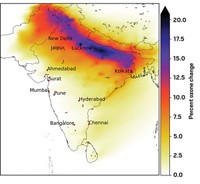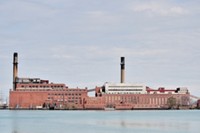Advertisement
Grab your lab coat. Let's get started
Welcome!
Welcome!
Create an account below to get 6 C&EN articles per month, receive newsletters and more - all free.
It seems this is your first time logging in online. Please enter the following information to continue.
As an ACS member you automatically get access to this site. All we need is few more details to create your reading experience.
Not you? Sign in with a different account.
Not you? Sign in with a different account.
ERROR 1
ERROR 1
ERROR 2
ERROR 2
ERROR 2
ERROR 2
ERROR 2
Password and Confirm password must match.
If you have an ACS member number, please enter it here so we can link this account to your membership. (optional)
ERROR 2
ACS values your privacy. By submitting your information, you are gaining access to C&EN and subscribing to our weekly newsletter. We use the information you provide to make your reading experience better, and we will never sell your data to third party members.
Environment
Cutting coal reduced atmospheric mercury in northeastern U.S.
Decreased pollution from coal-fired power plants has led to a decline in the region’s atmospheric mercury since 2000
by Deirdre Lockwood
January 25, 2017
| A version of this story appeared in
Volume 95, Issue 5
Mercury concentrations in the air in the northeastern U.S. have fallen in the past two decades as a result of closing and regulating coal-fired power plants in the region, a recent study shows (Environ. Sci. Technol. Lett. 2016, DOI: 10.1021/acs.estlett.6b00452). The study confirms that regional mercury concentrations are mainly affected by regional changes and are not overwhelmed by global mercury pollution.
Coal-fired power plants are the largest source of human-generated mercury to the atmosphere. Mercury is neurotoxic and, in its elemental form, can stay in the atmosphere for a year or more, making it challenging to figure out how much mercury measured in the air in one place comes from local versus global sources and to evaluate the effectiveness of regulations to lower regional mercury emissions.
To answer these questions, Thomas M. Holsen of Clarkson University and his colleagues analyzed atmospheric mercury levels measured in Underhill, Vt., from 1992 to 2014—representing the longest U.S. record of atmospheric mercury data—and in Huntington Forest, N.Y., from 2005 to 2014. They used global and U.S. data on mercury and sulfur dioxide emissions from power plants and other sources to determine what influenced these levels.
The team found that mercury in various forms declined between 2 and 8% per year at the two sites. Before 2000, decreasing waste incineration emissions were the primary cause of lower mercury levels. Since then, the main cause has been falling regional power plant emissions.
Philip K. Hopke, a study coauthor, says the recent declines are probably caused by many closures of coal-fired power plants in the northeastern U.S. due to economic drivers such as the 2008 recession and a shift toward fracking and cheaper natural gas. Placing controls on power plant emissions has also helped, he says.




Join the conversation
Contact the reporter
Submit a Letter to the Editor for publication
Engage with us on Twitter